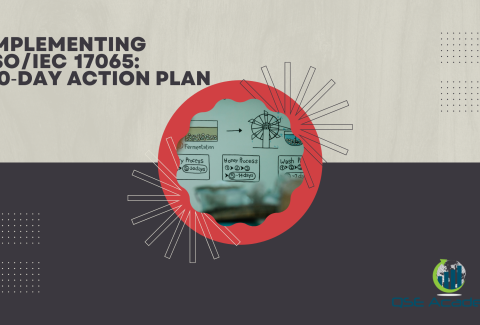ISO/IEC 17065 Internal Audits During Transition
Why Internal Audits Matter During ISO/IEC 17065 Transition
Here’s what I’ve seen whenever a certification body begins transitioning to ISO/IEC 17065:2012: their internal audit becomes the most reliable tool they have. It exposes gaps, reveals outdated procedures, and shows whether documentation actually matches the revised requirements. And when done right, it gives leadership the confidence that their system can withstand an accreditation assessment.
Internal audits during transition aren’t just routine checks. They’re a strategic inspection of how well your system aligns with updated structural, impartiality, and process requirements. Think of them as a safety net—you catch issues early before an external assessor finds them.
This guide walks you through how to plan these audits, where to focus, and how to identify the risks that matter most. You’ll see how internal audits uncover truth, not assumptions, and help you navigate transition with clarity.
Understanding the Role of Internal Audits in ISO/IEC 17065 Transition
Transition-focused internal audits have a different purpose than routine surveillance audits internally conducted each year. During transition, your job is to determine if your certification body truly meets the updated ISO/IEC 17065:2012 requirements—not just whether your team followed procedures.
Your internal audit must dig into clause alignment, impartiality controls, decision independence, scheme rules, sampling, testing, and document updates. You need to check if your processes reflect the transition or if you’re still operating under 1996 logic.
Pro Tip: Begin with a clause-by-clause comparison. It keeps the internal audit focused and objective.
Common Mistake: Using your old internal audit checklist without adding the revised clause requirements—this causes blind spots.
 Planning the Internal Audit Program for Transition
Planning the Internal Audit Program for Transition
A transition audit plan needs to be risk-based. That means you focus on the areas that can cause the biggest non-conformities: impartiality, independence of decision-making, documentation control, sampling logic, and scheme updates.
Your audit program should define frequency, scope, audit methods, and auditor assignments. And it should be updated to reflect the revised requirements—don’t use last year’s schedule without rethinking priorities.
Start by auditing high-risk areas. If your impartiality structure isn’t aligned, or your decision-making flow is unclear, everything else becomes secondary.
Pro Tip: Conduct the first round of audits early in the transition. It gives you time to fix issues before the accreditation body arrives.
Common Pitfall: Keeping the same audit schedule from previous years without considering new risks introduced by updated requirements.
Auditing Structural Requirements & Impartiality
Internal auditors must verify that the updated governance structure and impartiality requirements are working. This includes reviewing impartiality committee roles, conflict-of-interest declarations, financial risk assessments, and mitigation actions.
Your internal audit should check evidence, not just intentions. Declarations must be signed. Risk assessments must be documented. Oversight activities must be logged.
I often see CBs assume their impartiality structure is fine because it “hasn’t changed.” During transition, that assumption is dangerous.
Pro Tip: Add a dedicated impartiality-risk checklist inside the audit report to ensure consistent coverage.
Common Mistake: Treating impartiality as a single meeting topic instead of a continuous risk-monitoring activity.
Auditing Certification Processes During Transition
This is where internal auditors have the most work. Evaluation, review, and decision must be clearly separated. The 2012 version demands independence in decision-making, competence for evaluators, justification for sampling, and proper documentation of reviews.
Your internal audit should look for:
- Blurred roles
- Missing competence records
- Sampling plans without justification
- Surveillance that isn’t risk-based
- Decision rationales that lack clarity
I’ve seen certification bodies lose compliance because evaluators also performed final decisions “in special cases.” That’s unacceptable under ISO/IEC 17065:2012.
Pro Tip: Use a process map showing evaluator → reviewer → decision-maker. It highlights independence visually.
Real Insight: A CB I worked with thought their process met requirements, but their internal audit revealed that decision signatures were done by evaluators during peak workload. That simple oversight created multiple non-conformities.
Auditing Documentation & Records Control
Documentation must reflect the 2012 requirements. Your internal audit needs to cover version control, terminology, templates, forms, schemes, and records. This means checking documents for old references, outdated definitions, and missing clauses.
Your audit must verify that records show objective evidence of competence, sampling, testing, impartiality, and decision-making.
One CB I supported had updated their manual beautifully—but they forgot to update evaluator checklists. The assessor spotted the inconsistency in seconds.
Pro Tip: Add a “legacy terminology” review to your audit checklist. Anything referencing ISO Guide 65 is a red flag.
Common Pitfall: Updating top-level documents but leaving forms, templates, or supporting records unchanged.
Auditing Communication, Complaints & Appeals
ISO/IEC 17065:2012 expects clear public information, consistent communication, and accessible processes. Internal audits must check that what you publish, what you send clients, and what your procedures say all align with your updated scheme.
This includes:
- Appeals process
- Complaints handling
- Public information accuracy
- Published rules and certification conditions
I’ve seen CBs fail during transition just because their website had outdated rules—even though their internal procedures were updated.
Pro Tip: Include a website review in your internal audit plan. Assessors will check it—so should you.
Case Insight: A CB forgot to update their public certification rules after updating their scheme. That single inconsistency triggered a non-conformity.
Auditor Competence & Objectivity During Transition
Internal auditors must understand ISO/IEC 17065:2012. They need training, clause familiarity, and competence in evaluating impartiality and scheme logic. This isn’t the time for inexperienced auditors.
You must document auditor qualifications, impartiality declarations, and independence from the activities they’re auditing.
Pro Tip: Provide targeted transition training to internal auditors before the audit cycle begins.
Common Pitfall: Assigning internal audits to team members who wrote the procedures—they lack objectivity and independence.
Reporting Findings & Prioritizing Corrective Actions
Findings must be clear, clause-based, and risk-ranked. Internal audits should classify findings as major, minor, or opportunities for improvement. Prioritization is essential for transition progress.
High-risk issues include:
- Impartiality gaps
- Decision-making independence
- Outdated certification schemes
- Missing surveillance logic
One CB I supported cut their transition time significantly because they grouped findings by risk and assigned owners immediately.
Pro Tip: Use root-cause analysis before writing corrective actions. It avoids temporary fixes that fail later.
Follow-Up, Transition Monitoring & Readiness Review
Internal audits aren’t complete until corrective actions are verified. You need to check implementation, not just paperwork. If procedures are updated but staff training hasn’t happened, the gap remains.
A readiness review at the end of transition should simulate an accreditation audit. This final review exposes remaining weaknesses and confirms whether your system is stable.
Pro Tip: Use a transition dashboard that tracks gap closure, documentation updates, and evidence status.
Common Pitfall: Closing findings on paper without confirming operational effectiveness.
FAQs
How often should internal audits be conducted during transition?
As often as needed to verify readiness. High-risk areas may require multiple reviews within the year.
Do internal auditors need to be trained on ISO/IEC 17065:2012?
Yes. They must understand updated clause requirements, impartiality logic, and evaluation rules.
What causes the most non-conformities during transition internal audits?
Outdated documents, unclear decision independence, and missing impartiality evidence are top contributors.
Conclusion — Internal Audits as Your Transition Safety Net
Internal audits give you clarity. They show exactly where your system stands and guide you toward full ISO/IEC 17065 compliance. When carried out effectively, they eliminate surprises and prepare your organization for a smooth accreditation assessment.
Over the years, I’ve seen internal audits transform transition efforts. They catch gaps early, build confidence, and strengthen the entire certification process.
If you’re navigating transition now, start by updating your internal audit program—and I can help you build a clause-based checklist if you need it.
Melissa Lavaro is a seasoned ISO consultant and an enthusiastic advocate for quality management standards. With a rich experience in conducting audits and providing consultancy services, Melissa specializes in helping organizations implement and adapt to ISO standards. Her passion for quality management is evident in her hands-on approach and deep understanding of the regulatory frameworks. Melissa’s expertise and energetic commitment make her a sought-after consultant, dedicated to elevating organizational compliance and performance through practical, insightful guidance.









